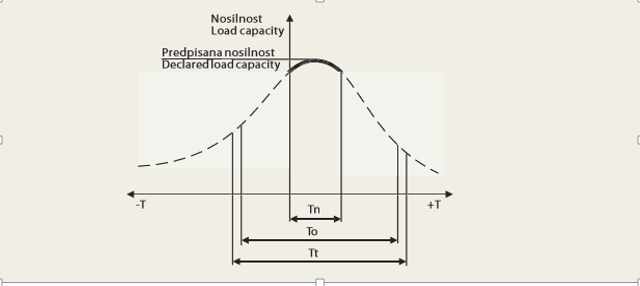Technical advise
CLASSIFICATION OF CASTORS AND WHEELS
Elementary functional classification:
- wheels
- swivel castors
- fixed castors
Further divisions as regards the type of the bearing, tread, wheel centre and housing are evident from the particular tabels.
LOAD CAPACITY OF CASTORS AND WHEELS
When choosing wheels as to their load capacity the following must be considered:
• Positioning the wheels or castors on the vehicle
(choose the number K according to the pictures).

Load capacities in the catalogue have been defined in line with the results of tests performed according to standard DIN EN 12527 Castors and wheels – Test methods and apparatus, these are values for dynamic load capacity at ambient temperature 20°C and other conditions detailed in standards for different purposes of use.
Depending on their purpose of use, castors and wheels are in conformity with one of the following standards:
• EN 840-5:2004 Mobile waste containers – Part 5: Performance requirements and test methods.
• DIN EN 12528:1999 Castors and wheels -Castors for furniture– Requirements.
• DIN EN 12529:1999 Castors for furniture – Castors for swivel chairs – Requirements.
• EN 12530:1998 Castors and wheels – castors and wheels for manually propelled institutional applications.
• EN 12532:1998 Castors and wheels – Castors and wheels for applications up to 1,1m/s (4 km/h).
• EN 12533:1998 Castors and wheels – Castors and wheels for applications over 1,1m/s (4 km/h) and up to 4,4 m/s (16 km/h).
Greater dynamic loads and temporary overloads due to:
• strokes
• falls
• rough or uneven floor
• rolling over obstacles
• higher speed
• side impacts
• higher or lower temperatures
• influence of chemical substances
have to be considered when choosing the right castor or wheel. In this case, the castor or wheel must not be loaded up to its nominal load capacity, otherwise you have to choose a castor or a wheel with a greater load capacity.
CHARACTERISTICS OF SPECIFIC BEARING
- Plain bearing: simple maintenance, nonreactive to blows, suitable for usage in damp places, for slower speed.
- Roller bearing: persistent, simple maintenance, non- reactive to blows, for slower speed.
- Ball bearing: easy moved also at greater loads and higher speed, suitable for frequent operation.
CHARACTERISTICS OF TYRE, TREAD OR SOLID WHEEL
- Solid rubber tyre: smooth run, small vibrations at transport, resistance while driving is smaller than with a pneumatic tyre.
- Polyurethane tread: large carrying capacity, small wear, smooth run, nonreactive to sharp metal splinters, irresistible to hot water and steam.
- Pneumatic: extreme damping of blows and little resistance on an uneven surface.
- Polyamide and polypropylene solid wheel: nonreactive to moisture and many acids, relatively large carrying capacity, suitable for smooth surfaces.
- Phenolic solid wheel: large load capacity, continuous temperature resistence up to 270°C. Very appropriate for bakeries and drying ovens. Phenolic wheels should not be used on an uneave floors (edges, obstacles) or rough floors.
- Cast iron solid wheel: large load capacity, small wear, very high temperature resistance, weaker damping of blows.
TEMPERATURE CONSTANCY
Castors and wheels load capacity declared in the catalogue is valid in the temperature range Tn. The operating temperature range To for the wheels can vary, depending on a smaller load capacity. Load capacity is changing in accordance with temperature changes. Some wheel materials temporarily resist to higher temperatures Tt, but smaller load capacity has to be considered!


* considering smaller load capacity !
** on customer’s request some polyamide and polyurethane wheels can be made of high temperature material.
CHEMICALS RESISTANCE


